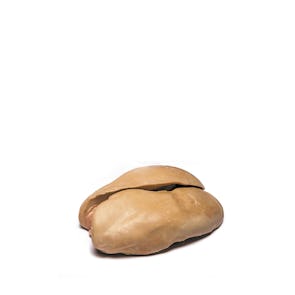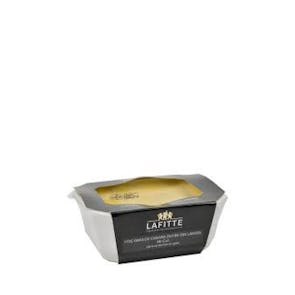- Categories
- Brands
- Origin
- Sort by: Recommended
Foie Gras
Delivering within Metro Manila
Foie gras is a delicacy like no other, the rich, buttery liver of a duck or goose that has been specially fattened to perfection. In the Landes region of Southwest France, the best foie gras is made from whole, unblemished livers, known as ‘entier,’ that have been carefully hand-selected for their quality and size. These livers are then carefully cleaned and prepared for fattening, a process that involves carefully feeding the ducks or geese a carefully controlled diet of corn and other grains.
Over the course of several weeks, the liver gradually grows and enlarges, becoming softer and more buttery in texture, and acquiring the rich, distinctive flavor that is the hallmark of true foie gras. When the liver is ready, it is carefully removed from the bird and shaped into a compact, rectangular block, ready for cooking and enjoying.
But what is it about foie gras that makes it so special? One factor is the care and skill that goes into its production. In France, foie gras is a centuries-old tradition, and the best producers are true artisans, with a deep knowledge of their craft and a commitment to quality and tradition. The result is a product that is truly exceptional, a culinary masterpiece that has no equal.
Another factor that sets foie gras apart is its rich, luxurious flavor. The fattened liver of a duck or goose has a unique, almost meaty quality, with a rich, buttery texture and a distinctive, slightly nutty taste. This flavor is enhanced by the careful selection of ingredients and the traditional methods used to prepare foie gras, resulting in a culinary experience that is truly one-of-a-kind.
Foie gras is also highly versatile, and can be enjoyed in many different ways. It can be served as a simple, unadorned block, sliced and seared to perfection, or it can be used as an ingredient in a variety of dishes, from elegant appetizers to rich, hearty main courses. No matter how you choose to enjoy it, foie gras is a culinary delight that is sure to impress and satisfy even the most discerning palate.
In conclusion, foie gras is a special and unique ingredient that is highly regarded for its rich, luxurious flavor and its unmatched culinary versatility. Whether you are a seasoned gourmet or a curious beginner, foie gras is a culinary experience that is not to be missed. So why not indulge in a little culinary luxury, and try some foie gras today? You won’t be disappointed.
What are the different types of Foie Gras?
There are two main types of foie gras: duck foie gras and goose foie gras. Both types are produced using the same basic methods, but there are some subtle differences in flavor and texture that set them apart.
Duck foie gras is the most common type of foie gras, and is known for its rich, slightly gamey flavor and its smooth, silky texture. This type of foie gras is typically made from the liver of the Moulard duck, a hybrid of the Pekin duck and the Muscovy duck. Duck foie gras is highly versatile, and can be enjoyed in many different ways, from simple slices seared to perfection, to elaborate dishes that showcase its rich, luxurious flavor.
Goose foie gras is less common than duck foie gras, but is highly prized for its distinctive flavor and texture. This type of foie gras is typically made from the liver of the Gascogne goose, a breed that is native to the Landes region of France. Goose foie gras has a slightly firmer texture than duck foie gras, and a more complex, nuanced flavor, with hints of caramel and nuts. Goose foie gras is often enjoyed on its own, or used as an ingredient in dishes that highlight its unique flavor and texture.
What is the difference between Foie Gras entier and Foie Gras bloc?
There are two main types of foie gras: foie gras entier and foie gras bloc. These two types of foie gras are produced using the same basic methods, but there are some subtle differences in flavor and texture that set them apart.
Foie gras entier, also known as ‘whole foie gras,’ is made from the whole, unblemished liver of a duck or goose. This type of foie gras is highly prized for its rich, luxurious flavor and its smooth, silky texture. Foie gras entier is often enjoyed on its own, sliced and seared to perfection, or used as an ingredient in a variety of dishes that showcase its rich, buttery flavor.
Foie gras bloc, on the other hand, is made from pieces of foie gras that have been carefully selected for their quality and size. These pieces are then cleaned, trimmed, and shaped into a compact, rectangular block, ready for cooking and enjoying. Foie gras bloc has a slightly firmer texture than foie gras entier, and a slightly more concentrated flavor. This type of foie gras is often used as an ingredient in dishes that require a precise, consistent shape and texture, such as terrine or pâté.
In conclusion, foie gras entier and foie gras bloc are two different types of foie gras, each with its own distinctive flavor and texture. Whether you prefer the rich, buttery flavor of foie gras entier, or the slightly firmer texture and more concentrated flavor of foie gras bloc, there is a foie gras to suit every taste and culinary preference.
What to pair Foie Gras with?
Foie gras pairs well with a variety of ingredients and flavors. Some classic pairings for foie gras include sweet and tangy flavors, such as figs or cherries, or acidic flavors, such as lemon or vinegar. Foie gras also pairs well with savory flavors, such as truffles or mushrooms, and can be enjoyed with a variety of wines, from crisp, dry whites to full-bodied reds.
When pairing foie gras with other ingredients, it is important to consider the texture and flavor of both the foie gras and the other ingredients. For example, foie gras has a rich, buttery texture that is complemented by the crunchy texture of toasted bread or the smooth, creamy texture of pâté. Foie gras also has a slightly gamey flavor that is enhanced by the earthy flavor of truffles or the sweet, tangy flavor of figs.
In conclusion, foie gras is a versatile and delicious ingredient that pairs well with a wide variety of flavors and ingredients. Whether you are looking for a classic pairing or a more adventurous flavor combination, there is a foie gras pairing to suit every taste and culinary preference. So why not experiment with different pairings, and discover the delicious possibilities of foie gras for yourself?
Where does Foie Gras comes from?
The history of foie gras is a story of culinary innovation and tradition. The ancient Egyptians were the first to discover the delicacy of fattened goose liver, and the ancient Romans developed a taste for foie gras as well. During the Middle Ages, foie gras was enjoyed by the wealthy and powerful, and it was often served at the feasts of kings and nobles.
In France, the production of foie gras reached its peak in the 17th and 18th centuries, and the Landes region of Southwest France became renowned for its foie gras. Some famous French chefs, such as Marie-Antoine Carême and Auguste Escoffier, were known for their use of foie gras in their haute cuisine. In the 19th and 20th centuries, foie gras became increasingly popular as a luxury ingredient, and it is still enjoyed by gourmets and food lovers around the world today.
Foie gras in Pop Culture
Foie gras has been featured in various forms of popular culture. In the world of literature, foie gras has been mentioned in the works of famous authors, such as Marcel Proust, who wrote about the delicacy in his novel “In Search of Lost Time,” and Agatha Christie, who featured foie gras in her novel “The ABC Murders.”
In the world of film, foie gras has also made appearances in various movies and television shows. For example, in the hit comedy film “Ratatouille,” the main character, Remy the rat, is shown enjoying a plate of foie gras. In the TV series “Entourage,” the character of Ari Gold is also seen enjoying foie gras at a fancy restaurant.
In conclusion, foie gras has been featured in various forms of popular culture, from literature and film, to television and music. It is a delicacy that has captured the imagination of writers, filmmakers, and other creators, and continues to be a popular subject in popular culture.


















